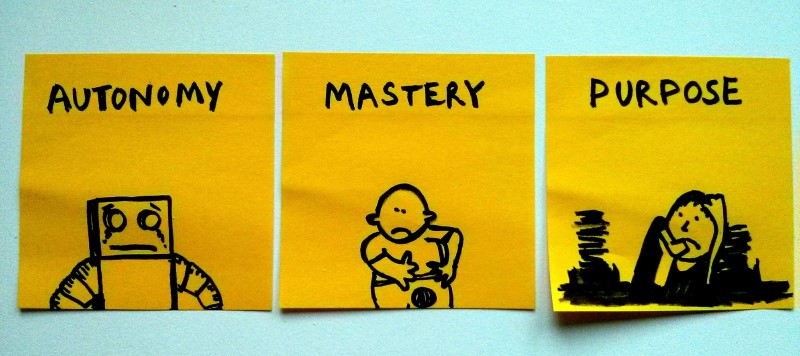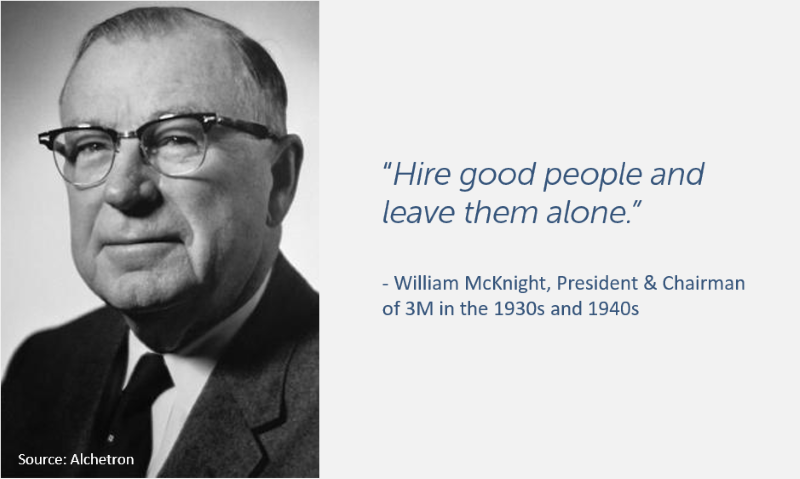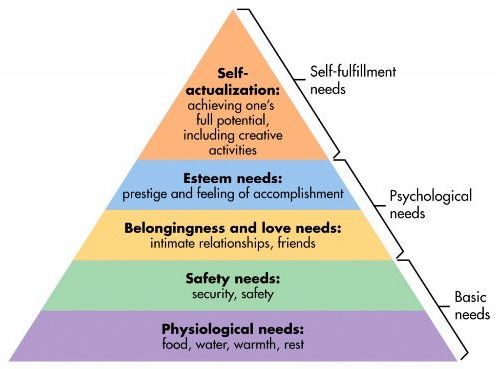- 15 March 2017
- Michael McGrath
Part 3/3 – How autonomy, mastery and purpose supercharge staff motivation
To understand this article in context, it will help to read part 1 and 2 first.
Part 1/3: ‘Why most staff motivation strategies aren’t working’,
Part 2/3 ‘How to avoid demotivating management practices’

In part one and part two of this blog series on staff motivation, drawing primarily from Daniel Pink’s book ‘Drive’, we have detailed how extrinsic rewards have been proven to demotivate staff and looked at how to avoid demotivating management practices.
In this post we explore how to supercharge staff motivation and unlock the full value of your workforce by creating a workplace culture of autonomy, mastery and purpose.
Autonomy
Success is not measured by a timesheet, nor how many people are staring at a screen in the office. ‘Presenteeism’ and counting the hours of your employees does not correlate with productivity the way we’ve deluded ourselves that it does for so long. Real motivation and business success certainly doesn’t come from keeping people at their desks as much as possible.
The real way to motivate staff is first through providing autonomy. The ability to choose their own Task (what they do), Time (when they do it), Team (who they do it with) and Technique (how they do it) leads to far more effective organic collaboration and a greater sense of accountability to the business.

In fact a Cornell University study at 320 small businesses revealed that businesses offering autonomous work environments grew at four times the rate and had one-third the turnover of those firms with a control-oriented management structure.
One of the first successful examples of this is the Results Only Work Environment (ROWE™ ) strategy created by Jody Thompson and Cali Ressler at Best Buy. Staff show up when they want. They work the hours that best suit when they are most productive and what fits with their personal lives. If somebody arrives at 10am and then leaves at 3pm to take their kids to soccer practice, nobody bats an eyelid… So long as the work gets done.
“When you get to take over your own life and feel responsible for yourself and your work, you feel proud and liberated and dignified.” Jody Thompson, Best Buy
Independent scholarly research found that ROWE™ increases productivity, employee well-being and work-life balance, transforming staff relationships with each other to one based on trust, accountability and results while decreasing attrition. At Best Buy, the approach produced $2.2 million in savings over three years according to the CultureRX website.
Practical steps towards creating a Results Only Work Environment (ROWE™) from Thompson and Cali:
- Have frequent informal performance conversations rather than annual reviews
- Maintain accountability and responsibility, focusing on work accomplished, not hours worked. Let go of the 40-hour work week mentality: productivity is the new currency.
- See work as something staff do, not somewhere they go. They will work best if they can work where and when they are most productive.
- Let staff devise their own approach to solving problems and be responsible for the outcome.
- The customer / client is at the centre of all decisions.
- No results, no job.
We all have different times and places where we know we perform best and nobody likes being closely managed. As business leaders, the need for autonomy may be a significant reason for why you chose to start your own business!
Fulfilling this need within your own staff will help you get the best performance for your business while maintaining a motivated and loyal team.

Mastery
Pink’s second factor to motivation is the pursuit of mastery: “the urge to make progress and get better at something that matters. Real job satisfaction depends on things like interesting work, greater responsibility and the opportunity to grow.”
Maslow articulates it well as self-actualisation. “The realisation or fulfilment of one’s talents and potentialities” (Wikipedia)

Staff should be focused on their own pursuit of mastery, collaborating and drawing on the strengths of their team to propel them further. Their team should be their allies, not their competition.
The first step towards mastery begins with ‘flow’. Also known as ‘the zone’, the term named by Mihály Csíkszentmihályi describes the mental state in which a person performing an activity is fully immersed in a feeling of energised focus, full involvement and enjoyment in the process of the activity. In flow, time and effort melt away, your team are working as efficiently as possible, drawing on the full reserve of their capacity.
Additionally, mastery requires a growth mindset rather than a fixed mindset – viewing one’s abilities as having infinite potential rather than capped by intelligence. This is why any rewards should be provided after an activity and focus on the growth process and strategy rather than the fixed outcome.
Mastery demands conscientious effort and grit: courage and perseverance, strength of character and a passion for long-term goals.
Practical steps towards facilitating mastery for employees
- Instead of providing rewards to motivate staff, try to shape their role to be more enriching, meaningful and challenging.
- Instead of praising successful outcomes, provide detailed feedback during the progress phase and acknowledgement of the effort and process.
- Create an authentically collaborative environment that facilitates staff in learning from each other to enhance their own skills.
Purpose
Purpose provides context for autonomy and mastery. People innately want to be part of a cause greater and more enduring than themselves and this is increasingly common amongst the next generation of millennial employees. “A purpose mobilises people in a way that pursuing profits alone never will.” Sherry Hakimi, Fast Company
Over recent years we have seen a trend in for-profit companies implementing altruistic, non-profit-motivated practices, both to benefit the world an ethical foundation to provide purpose for staff. An example is the philanthropic arm of the Cotton On Group: Cotton On Foundation, focused on developing and supporting health, education, sustainability and infrastructure projects in Southern Uganda. This is genuinely ethically driven rather than a simple marketing ploy such as ‘pink-washing’ which boosts profits by making claims they support breast cancer programs, whether or not company contributions are linked to sales or their products.
We’ve also seen the emergence of an entirely new type of purpose-driven social enterprise that falls somewhere between non-profit and for-profit, whereby companies generate revenue through traditional business means but exist for a greater good. Success is measured not in revenue, but by the benefit they provide to the community.
Hugely successful examples of this are companies such as Thankyou who use profits to fund clean water and maternal health projects, or TOMS which launched selling shoes whereby for every pair purchased, they donated a pair to a child in need.
On a small scale, many employers are now offering staff an allocation of paid days each year to volunteer for a charity.
Having an authentic and clearly articulated purpose – beyond the pursuit of wealth – is a key element of maintaining a highly-motivated staff.
Practical steps to provide purpose for employees
- Be authentic – if the leadership team doesn’t genuinely embrace or believe in your purpose, it will do more damage than good.
- Compose a clear, comprehensive narrative that staff understand and both leadership and staff can believe in.
- Give employees control over how they as individuals or the organisation can give back to the community
- Avoid fuelling profit goals for staff. Research shows these to ‘increase anxiety and depression, and even when attained they have no impact on well-being and actually contribute to ill-being.’ These will contribute to short-term profit-making behaviour and do little to benefit the business or your staff in the long term.
Summary
Staff motivation is the key to unlocking the full potential of your workforce!
- Pay above market rate, then stop focusing on remuneration.
- Provide rewards and praise sporadically, after the behaviour (not as an incentive) and with a focus on the strategy and effort, not the outcome.
- Avoid the desire to make everything measurable! This distracts staff away from the work that will actually yield results.
- Stop measuring the value you receive from your staff based on their hours in the office.
- Learn to trust your employer’s innate desire to self-motivate.
- Give autonomy over the way the work gets done. Instead of managing people, manage results.
- Create goals and objectives that are inspiring and meaningful to staff.
- Make sure you have a purpose and something for your staff to believe in – beyond growing profits
And if it’s all too much to consider at once…
- Consciously choose to trust your staff.
- Maybe you could trial flexible start and finish hours within certain parameters or greater flexibility / work from home on particular days of the week.
- Be open-minded and accommodating when staff request flexibility based on their individual circumstances. Demonstrating trust will be repaid with a loyal, motivated team. Skepticism and resistance is demeaning and will damage morale. More often than not you will lose more than you gain by saying no.
- Make a conscious effort to focus on the process and approach of your team rather than the outcome.
- Pay attention to your habits that would be perceived by your staff as micro-managing. Now stop doing it! Looking over screens, checking your watch when they arrive…
- Allow time for staff to focus on a project of their choosing. This has worked very successfully for businesses such as Google, 3M, Atlassian where use of this time has led to innovative and profitable new products.

